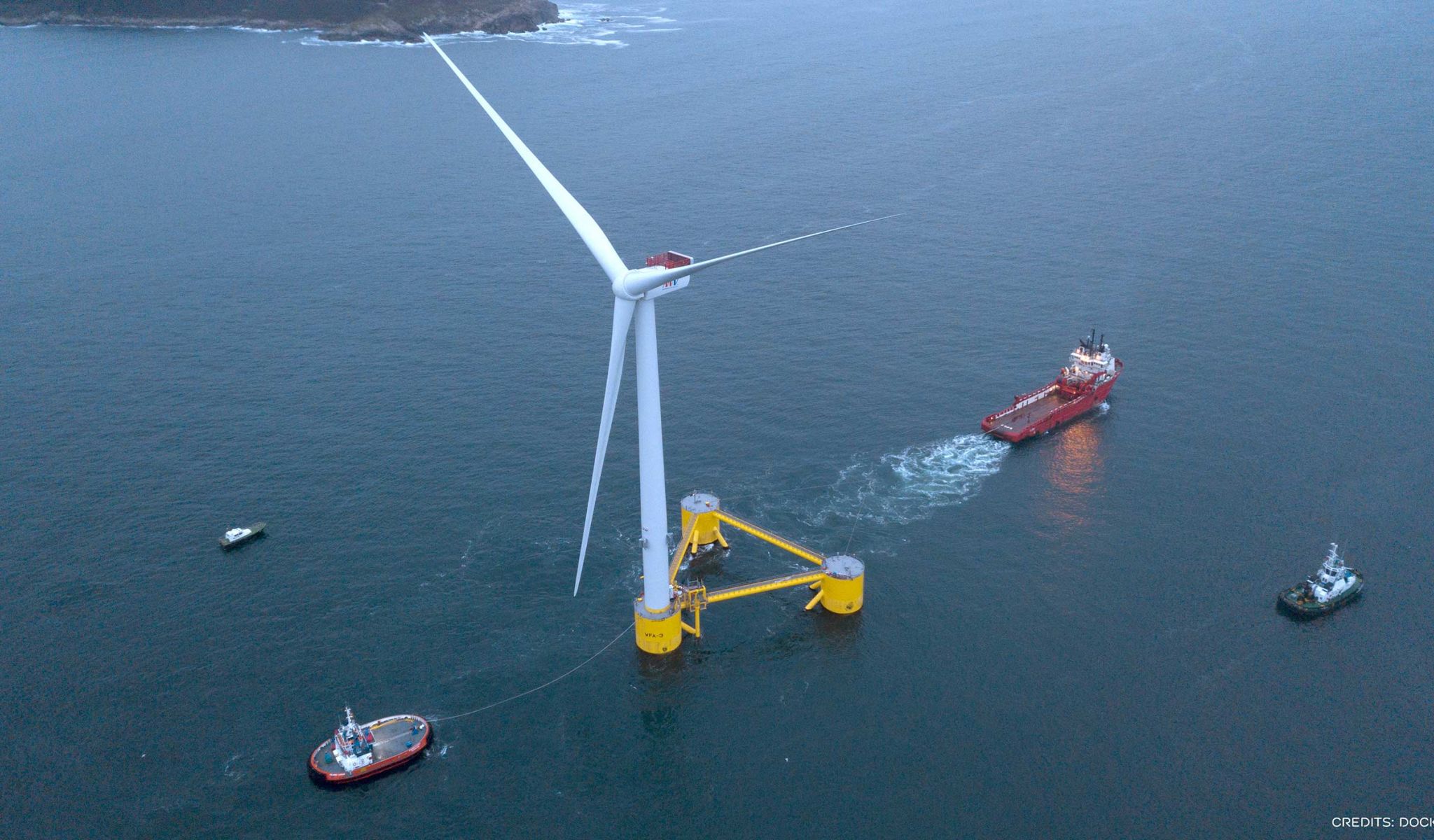Senior Labour figures today backed floating wind farms off Britain’s coasts as essential to delivering the party’s policy on clean energy.
Sir Kier Starmer & shadow energy secretary Ed Milliband also pledged the party to cancel last year’s grant by the Conservative government of new oil and gas exploration permits in the North Sea.
Touring energy sites in north Wales with newly elected first minister Vaughan Gething, the opposition figures today extolled the speed and flexibility of floating wind farms.
Both Labour and the Liberal Democrats are committed to 2030 – five years earlier than the Conservatives – as their deadline for stripping fossil fuel generation out of UK electricity. Wind’s growing share they see as essential.
“Britain is a proven leader already in offshore wind”, shadow Welsh secretary Jo Stevens said told the BBC this morning. “Our experience of floating turbines in the Celtic Sea only underlines the technology’s huge potential”.
Labour echoes the Sunak government’s commitment to 50GW of marine wind generating by 2030. 5GW more is earmarked to come from floating structures.
Last July the Crown Estate advertised the world’s largest floating turbine opportunity, 4GW across concessions in the Celtic Sea.
Though only the Hywind & Kincardine projects – amounting to less than 1GW – are Britain’s only floating farms now generating, a massive 35 GW more of floating turbines stand at all stages of development, across 49 projects.
From conventional seabed-based structures, Britain’s operating offshore capacity is around 15GW. Another 14GW is under construction or having reached the final investment hurdle.
Against the government’s 50GW goal, that means only six years remain to bring another 21GW of offshore wind into operation.
Milliband confirmed that Labour’s investment in floating turbines would be part of the £7 Billion a year it promised to Great British Energy, its nationalised green generator. A Labour government would double public investment in onshore wind and in home insulation, and treble that for solar deployment, he said.
Labour policymakers believe that, so great is developer interest in floating turbines, every pound committed from the public purse will attract three more from private investors.
RenewableUK, lobbyists for British wind investors, welcomed Labour’s backing for the innovative spinners.
Head of offshore policy Jane Cooper said: “Developing floating wind at scale offers opportunities for us to build a far greater number of offshore wind farms in deeper, windier waters, off the coast of South Wales and the south west of England, providing vast amounts of home-blown clean power.
“We’re delighted that Keir Starmer, Vaughan Gething and the Labour team are so committed to developing floating wind, “Cooper went on.
“They recognise the huge economic opportunity this innovative technology offers for the south west of England and Wales, particularly if we can develop ports like Milford Haven and Port Talbot to ensure they’re large enough to house new manufacturing and assembly facilities for turbines as tall as The Shard and platforms the size of football pitches”.
“There is currently a huge decision on the desk of government when it comes to floating offshore wind,” the spokesperson added.
“The UK could unlock investment in the Erebus wind farm this year, a world-leading project off the coast of Pembrokeshire, in addition to two other projects off the coasts of Scotland the north east of England, through its upcoming clean power auction this summer. However, the budget set out for that auction is too low, putting progress at risk, so we’re calling on Government to revise this at the earliest opportunity.”
Meanwhile specialist consultancy Newton assessed that Britain will need 6.1 million tonnes of steel this decade to meet the 50GW offshore goal. With plants including Port Talbot likely to reduce production at least temporarily, the nation would struggle to meet the goal, said the researchers.
“To ensure we’re not blown off track, it is imperative that UK industry and government collaborate to ensure a steady supply of steel that can meet the predicted demand peaks as industry flexes to meet the 50GW target”, said Newton’s Dan Parker.




